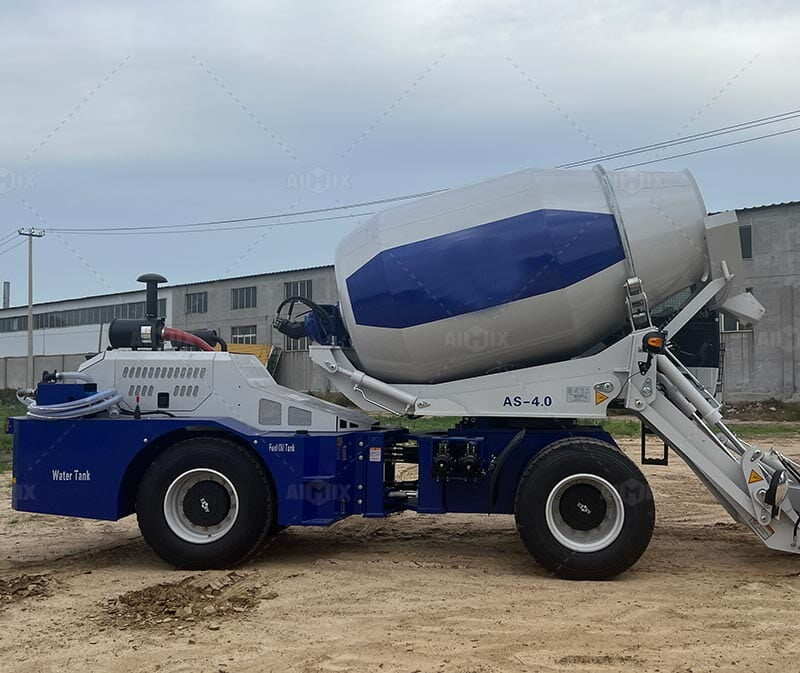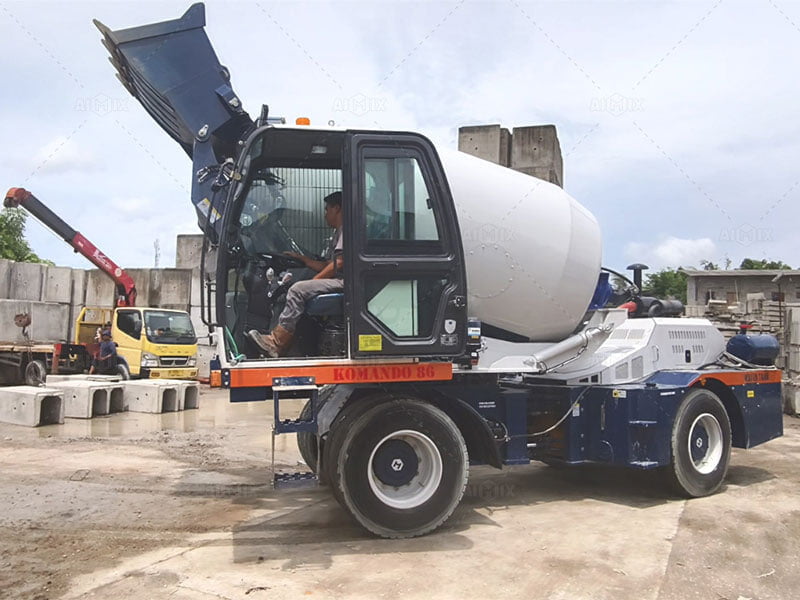Self-loading concrete mixers are integral to many construction projects, offering efficiency and versatility. However, like any machinery, they can encounter issues that disrupt operations. Knowing how to troubleshoot these common problems is crucial for maintaining productivity and ensuring smooth project progression.

Identifying Mechanical Problems
Engine Troubles
The engine is the heart of any self-loading concrete mixer. If the engine fails to start or runs inconsistently, it can bring your entire operation to a halt. Common engine issues include fuel problems, air intake blockages, and electrical faults. Start by checking the fuel level and quality. Contaminated or old fuel can cause starting issues. Ensure the air filter is clean and unobstructed to allow proper airflow. Additionally, inspect the battery and electrical connections for any signs of corrosion or loose wires.
Hydraulic System Failures
Hydraulic systems power many of the mixer’s functions, including loading and mixing. Leaks, low fluid levels, and pump malfunctions are typical hydraulic issues. Inspect the system for visible leaks and ensure hydraulic fluid levels are adequate. If the problem persists, it may indicate a failing pump or clogged filters that need replacing. Regular maintenance of the hydraulic components can prevent many of these issues on self loader mixer operation.
Troubleshooting Operational Issues
Mixing Drum Problems
The mixing drum must rotate smoothly and consistently to ensure proper mixing of the concrete. If the drum is not rotating or rotates unevenly, check the drive system for any wear or damage. The drive belt and gears should be in good condition and properly aligned. Also, ensure there is no hardened concrete obstructing the drum’s movement. Regular cleaning of the drum can prevent such obstructions.
Loading Arm Malfunctions
The loading arm is essential for the self-loading functionality. If the arm is not operating correctly, inspect the hydraulic controls and cylinders for leaks or damage. Additionally, check the pivot points and bearings for signs of wear. Lubrication of these components can often resolve issues related to restricted movement or noise during operation.

Addressing Electrical Issues
Control Panel Errors
The control panel is the command center of the mixer. Faulty sensors, loose connections, or software glitches can cause control panel errors. Begin troubleshooting by inspecting the connections and ensuring all wires are securely attached. Resetting the system or updating the software might also resolve some issues. If the problem persists, consulting the self loading cement mixer manufacturer’s manual or seeking professional assistance may be necessary.
Lighting and Indicator Problems
Proper lighting and functioning indicators are crucial for safe operation. If the lights or indicators are malfunctioning, check the bulbs and fuses first. Replace any blown bulbs or fuses. If the issue is not resolved, inspect the wiring for any signs of damage or wear. Ensuring the electrical system is intact is vital for both operational efficiency and safety.
Troubleshooting common issues with self-loading concrete mixers requires a systematic approach. Regular maintenance, prompt attention to minor faults, and understanding the machinery's components are key to minimizing downtime and maximizing efficiency. By addressing mechanical, operational, and electrical issues promptly, you can ensure your self loading concrete mixer for sale remains a reliable asset in your construction arsenal.
